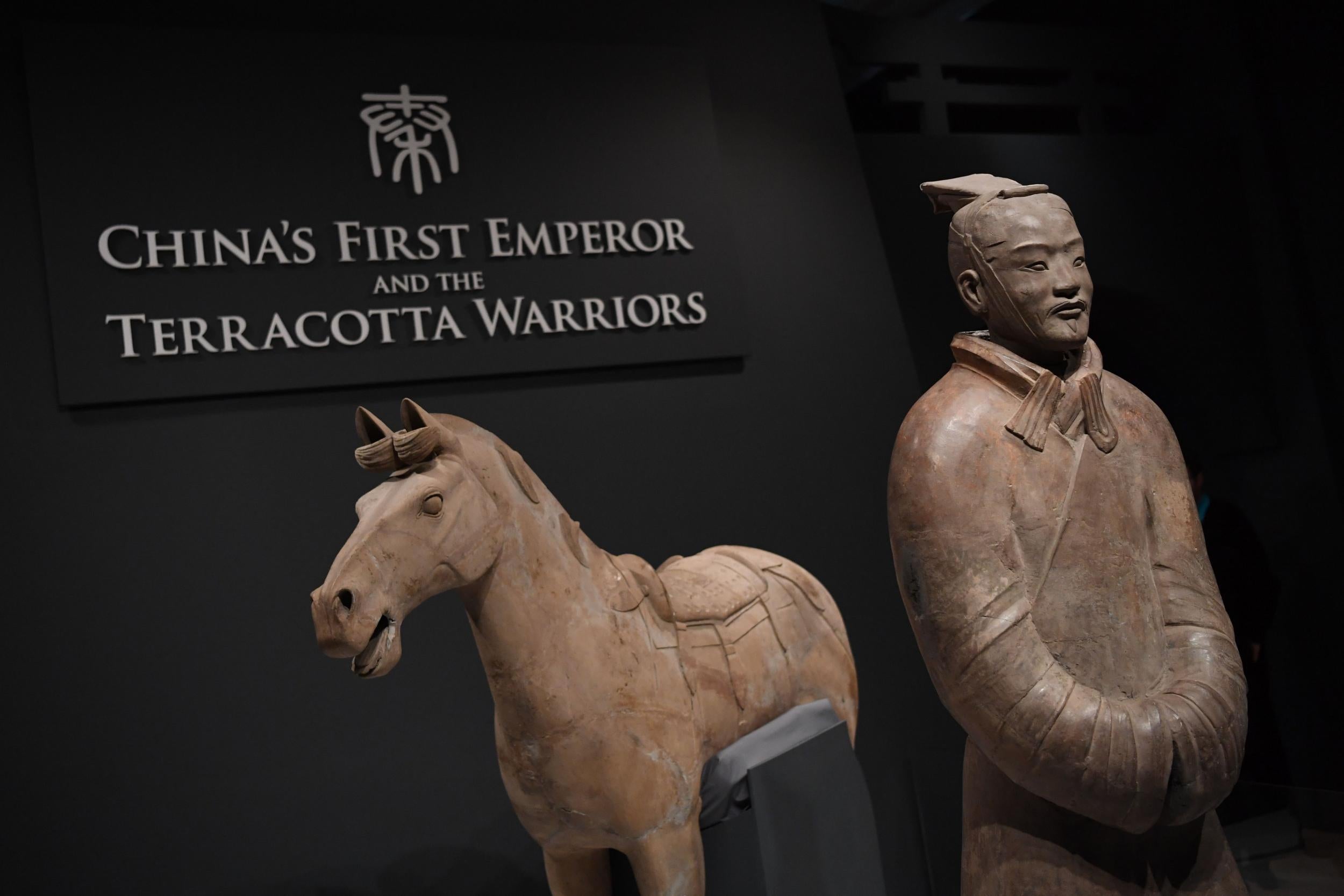China furious over theft of terracotta warrior's thumb on loan to US museum
Country angered by alleged theft at Philadelphia museum's Christmas party

Your support helps us to tell the story
From reproductive rights to climate change to Big Tech, The Independent is on the ground when the story is developing. Whether it's investigating the financials of Elon Musk's pro-Trump PAC or producing our latest documentary, 'The A Word', which shines a light on the American women fighting for reproductive rights, we know how important it is to parse out the facts from the messaging.
At such a critical moment in US history, we need reporters on the ground. Your donation allows us to keep sending journalists to speak to both sides of the story.
The Independent is trusted by Americans across the entire political spectrum. And unlike many other quality news outlets, we choose not to lock Americans out of our reporting and analysis with paywalls. We believe quality journalism should be available to everyone, paid for by those who can afford it.
Your support makes all the difference.Chinese officials are demanding punishment for the alleged theft of a thumb from an ancient terracotta warrior statue on display at an American museum.
The FBI has charged 24-year-old Michael Rohana with snapping the thumb off of the 2,000-year-old Chinese sculpture during an "ugly Christmas sweater" party at the Franklin Institute, the Philadelphia museum that is currently displaying 10 of China’s famed terracotta warriors.
The agency claims Mr Rohana walked into the exhibit through an unlocked door during the party on 21 December. He perused the dark exhibit using the light from his cell phone, then posed for a selfie with the statue in question, according to an arrest affidavit. Before leaving, he tore off the statue’s thumb as a souvenir, the affidavit said.
An attorney for Mr Rohana could not immediately be reached for comment.
Wu Haiyun, the director of the government-run organisation that loaned the statues out, criticised the Franklin Institute for being "careless" with the statues, according to CCTV.
"We ask that the US severely punish the perpetrator. We have lodged a serious protest with them," he said.
The museum said in a statement that a safety contractor had not followed proper closing procedures on the night of the party. The museum said it had conducted a thorough review of security procedures, and “taken appropriate action where needed”. The statement also noted that an internal investigation gave the FBI "the information necessary to identify the suspect."
FBI agents tracked Mr Rohana to his house in Bear, Delaware using credit card transactions and surveillance video from the night in question, according to the affidavit. The document said Mr Rohana had attended the party with five friends – one of whom said they heard him talking about the finger on the ride home. Another friend said they saw him post a photo of it on Snapchat the next day.
Upon being confronted by agents, Mr Rohana confessed to stealing the artifact and retrieved it from his desk drawer, according to the affidavit. He has been charged with concealment of major artwork from a museum and interstate transportation of stolen property.
Mr Wu, the official from the Shaanxi Cultural Heritage Promotion Centre, said the organisation would be sending two experts to the US to assess the damage, and would be making a claim for compensation.
The sculpture was one of 10 loaned out to the Franklin Institute as part of its Terracotta Warriors of the First Emperor exhibition. The warriors – one of China’s biggest tourists attractions – were crafted to accompany the tomb of China’s first emperor, Qin Shi Huang. They were uncovered by workers digging a well outside Xi’an in 1974.
Subscribe to Independent Premium to bookmark this article
Want to bookmark your favourite articles and stories to read or reference later? Start your Independent Premium subscription today.
Join our commenting forum
Join thought-provoking conversations, follow other Independent readers and see their replies
Comments